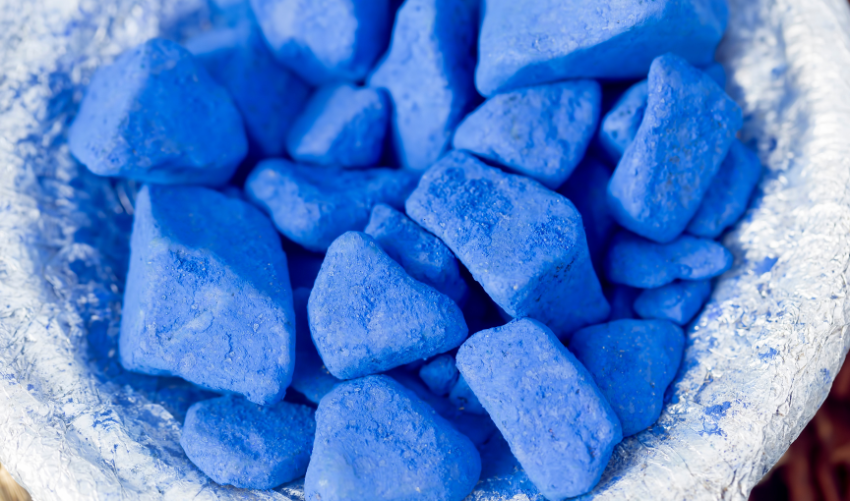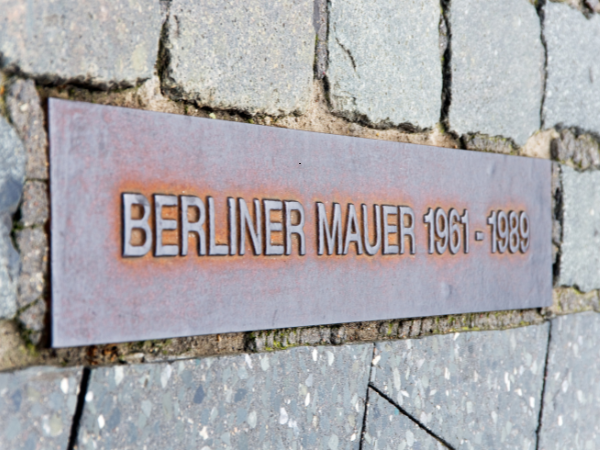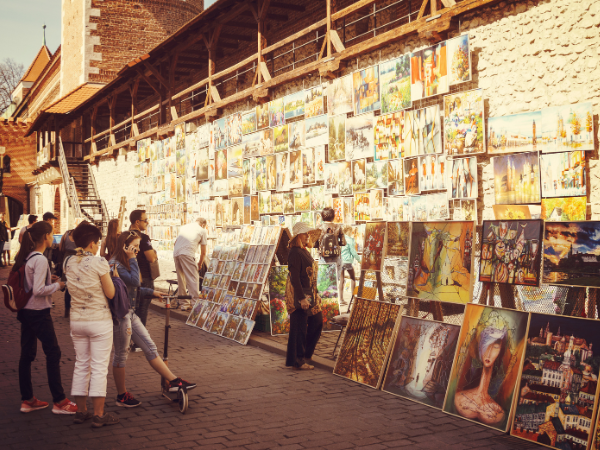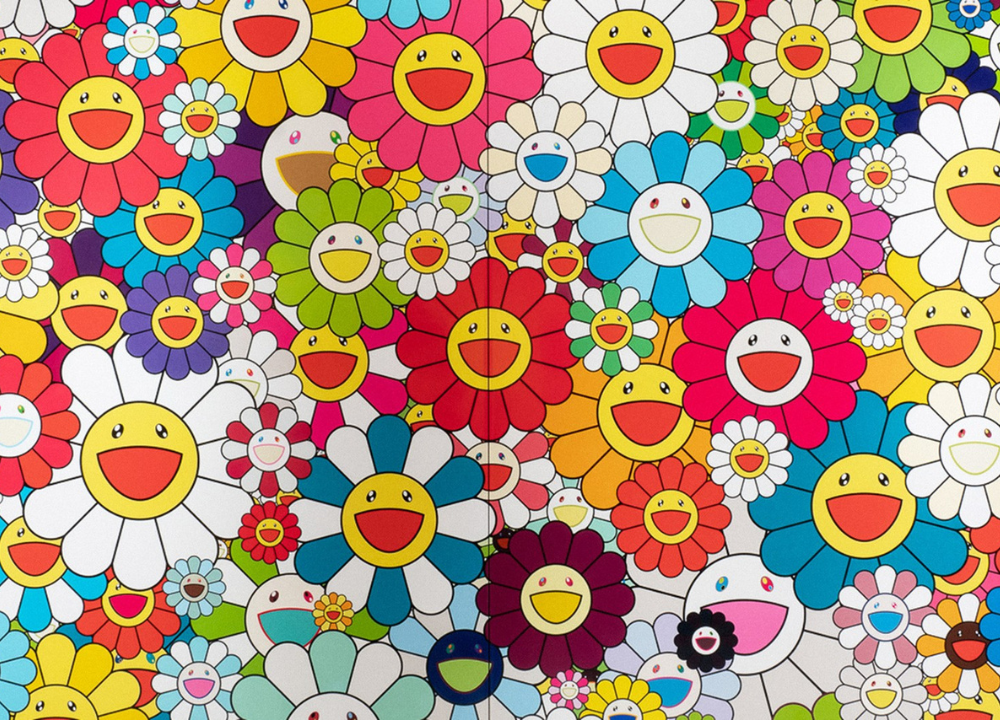Cobalt color has a rich and fascinating history that spans centuries. This stunning shade, known for its vibrant blue hue, has captivated artists and collectors alike.
You’ll learn how this color has influenced famous artworks and transformed the way artists express themselves.
Cobalt Color Origins
Cobalt color has a rich history and unique qualities that make it special. This vibrant blue hue has fascinated artists and scientists for centuries.
Cobalt color comes from cobalt salts. These salts are derived from cobalt, a metal found in the earth’s crust. Cobalt has been used for thousands of years, but its vivid blue pigment became popular in the 18th century.
Early Uses Of Cobalt
- Cobalt was used by ancient Egyptians.
- It appeared in blue glass and ceramics.
- Chinese artisans used cobalt in pottery.
These early uses show how cobalt blue was valued. It represented beauty and craftsmanship. The bright color was hard to achieve with other materials.
Discovery Of Cobalt Blue
The real breakthrough came in 1802. A chemist named Louis Jacques Thénard discovered cobalt blue. This pigment was made by heating cobalt salts with aluminum oxide.
| Year | Event |
|---|---|
| 1802 | Discovery of Cobalt Blue by Louis Jacques Thénard |
| 19th Century | Widespread use in art and industry |
This discovery made cobalt blue accessible to many artists. It quickly became a favorite for painters. The color was stable and did not fade easily.
Cobalt In Modern Times
Today, cobalt color is used in various fields. Artists continue to use cobalt blue in paintings. It is also found in ceramics, glass, and even in cosmetics.
- Art: Cobalt blue adds depth and richness to paintings.
- Industry: Used in inks and coatings.
- Fashion: Found in textiles and makeup.
Cobalt color has evolved but remains important. Its origins tell a story of creativity and discovery. This vibrant hue continues to inspire artists around the world.

Historical Significance
Cobalt color has a rich history that spans centuries. It is known for its vibrant blue hue and unique properties. Artists and craftsmen have used cobalt pigments for various purposes. Understanding its historical significance helps appreciate its role in art and culture.
Origins Of Cobalt Pigments
The use of cobalt dates back to ancient times. The earliest known use of cobalt blue was in ancient Egypt. Egyptian artisans used cobalt for glassmaking and pottery.
During the Middle Ages, cobalt became popular in Europe. Its stunning blue color was used in ceramic glazes. It was also favored by painters for its vividness and durability.
Cobalt In The Renaissance
The Renaissance marked a turning point for cobalt color. Artists like Vermeer and Rembrandt embraced cobalt blue in their works. This pigment added depth and richness to their paintings.
- Vermeer used cobalt blue in “Girl with a Pearl Earring.”
- Rembrandt’s “The Night Watch” features cobalt in the shadows.
Industrial Revolution And Cobalt
The Industrial Revolution brought changes to cobalt production. New methods made cobalt pigments more accessible. Artists could now find cobalt blue in tubes, simplifying the painting process.
| Era | Impact on Cobalt |
|---|---|
| Ancient Egypt | First known use in glass and pottery. |
| Renaissance | Adopted by famous painters for vibrant artworks. |
| Industrial Revolution | Improved production methods; wider availability. |
Modern Uses Of Cobalt Color
Today, cobalt color appears in various forms. It is still used in painting and ceramics. Designers also use cobalt in fashion and interior design.
This pigment symbolizes creativity and innovation. Its historical roots continue to inspire artists worldwide.
Cobalt Pigments
The world of cobalt pigments is rich and colorful. These pigments have a long history in art and industry. They create vibrant shades that artists cherish. Cobalt pigments include several colors, each with unique properties. Understanding these colors helps in choosing the right pigment for art projects. Let’s explore some popular cobalt pigments: Cobalt Blue, Cobalt Green, and Cobalt Violet.
Cobalt Blue
Cobalt Blue is one of the most famous pigments. It has a bright, deep blue color that artists love. This pigment was first made in the early 1800s. It quickly became popular for its stability and vibrant hue.
Key features of Cobalt Blue:
- Lightfastness: Cobalt Blue does not fade over time.
- Non-toxic: Safe for artists to use.
- Mixing: Blends well with other colors.
This pigment is often used in:
- Paintings: Creates stunning skies and water scenes.
- Ceramics: Adds a rich blue glaze to pottery.
- Glass: Used in stained glass artworks.
In terms of composition, Cobalt Blue is made from cobalt(II) aluminate. Its chemical formula is CoAl2O4. This compound gives it a unique shade that cannot be easily duplicated.
Cobalt Green
Cobalt Green is another valuable pigment. It offers a cool, refreshing green color. This pigment was developed in the early 19th century. Artists appreciate its clarity and brightness.
Characteristics of Cobalt Green:
- Transparency: Allows light to pass through, creating depth.
- Durability: Resistant to fading and weathering.
- Mixing: Works well with yellows and blues.
Common uses for Cobalt Green include:
- Landscapes: Ideal for painting lush foliage.
- Abstract art: Provides vibrant color contrasts.
- Textiles: Used in dyeing fabrics.
The pigment is made from cobalt(II) oxide and zinc oxide. Its chemical formula is CoO·ZnO. This combination produces a beautiful green color that artists find inspiring.
Cobalt Violet
Cobalt Violet adds a unique touch to any palette. It features a soft, muted purple hue. This pigment became popular in the late 19th century. Its gentle tone is perfect for subtle effects in artwork.
Important features of Cobalt Violet:
- Opacity: Offers excellent coverage on surfaces.
- Stability: Retains color over time without fading.
- Mixing: Creates beautiful shades with reds and blues.
Artists use Cobalt Violet for:
- Portraits: Adds warmth to skin tones.
- Flowers: Captures the essence of delicate blooms.
- Backgrounds: Creates depth in landscapes.
Cobalt Violet is made from cobalt phosphate. Its chemical formula is Co3(PO4)2. This compound gives it a special richness that enhances artworks.
Artistic Applications
The cobalt color is a stunning hue that has a rich history and many artistic applications. Its vibrant blue shades have captivated artists and craftsmen for centuries. Cobalt pigments are used in various forms of art, from painting to ceramics. This section explores how cobalt color is applied in different artistic fields. Each application showcases its versatility and beauty.
Painting Techniques
Cobalt pigments have a unique quality that makes them popular among artists. They offer bright, durable colors that resist fading. Various painting techniques utilize cobalt color effectively:
- Watercolor: Cobalt blue adds depth to washes. It blends well with other colors.
- Oil Painting: Artists use cobalt for its richness and opacity. It creates striking highlights.
- Acrylics: Cobalt pigments provide a vibrant finish. They dry quickly and maintain their hue.
Many famous artists, like Vincent van Gogh, used cobalt blue to convey emotion. The color brings energy and life to their work. Here is a table showing some common cobalt pigments used in painting:
| Pigment Name | Color Type | Usage |
|---|---|---|
| Cobalt Blue | Inorganic | Oil and acrylic painting |
| Cobalt Teal | Inorganic | Watercolor and gouache |
| Cobalt Violet | Inorganic | Mixed media and oil |
Cobalt color’s versatility makes it a favorite for artists. Its ability to blend and stand out creates captivating artworks.
Ceramics And Glass
Cobalt blue is a staple in ceramics and glass. Its intense color is created through cobalt oxide. This pigment is stable at high temperatures, making it ideal for glazing pottery.
Common uses include:
- Majolica Pottery: Cobalt adds vibrant designs to earthenware.
- Porcelain: It enhances fine china with delicate blue patterns.
- Stained Glass: Cobalt creates stunning blue panes in windows.
Artists and potters value cobalt for its durability. The color remains bright even after firing. Here is a list of popular cobalt applications:
- Blue and white china
- Artistic tiles
- Decorative glassware
Cobalt color has a long tradition in ceramics. Its beauty and permanence make it a timeless choice.
Textiles And Fashion
Cobalt color also shines in textiles and fashion. It is popular for its bold, eye-catching appeal. Designers use cobalt to create striking patterns and vibrant clothing.
Some common applications in textiles include:
- Fabrics: Cobalt dye is used in cotton and silk.
- Home Decor: Cobalt colors enhance curtains, cushions, and upholstery.
- Fashion: Cobalt garments are fashionable and versatile.
Cobalt blue can be paired with various colors, such as:
| Color Combination | Effect |
|---|---|
| White | Fresh and clean look |
| Black | Elegant and sophisticated |
| Yellow | Bright and cheerful contrast |
Cobalt color enriches textiles and adds personality to fashion. Its appeal crosses cultures and styles.
Modern Usage
Cobalt color has a rich history and many artistic uses. Today, it is still important in various fields. The modern usage of cobalt color includes industrial applications and art restoration. These areas highlight cobalt’s versatility and value in contemporary settings.
Industrial Applications
Cobalt color plays a significant role in many industries. Its vibrant hue and durability make it desirable for various products. Some of the main industrial applications include:
- Ceramics: Cobalt is widely used in glazes and underglazes. It gives pottery a deep blue color that is highly sought after.
- Plastics: Cobalt pigments are added to plastics for color stability. They enhance the look and longevity of plastic products.
- Coatings: Cobalt-based paints and coatings are used in automotive and industrial applications. They provide a protective layer and resist fading.
- Glass: Cobalt is used in glassmaking to achieve a rich blue color. It is common in stained glass and decorative glassware.
Here is a table summarizing some industrial applications of cobalt color:
| Application | Description |
|---|---|
| Ceramics | Used in glazes to create vibrant blue pottery. |
| Plastics | Provides color stability in plastic products. |
| Coatings | Enhances durability and color in paints. |
| Glass | Creates a deep blue hue in decorative glass. |
The versatility of cobalt color in industry shows its importance. It not only adds beauty but also improves product quality. Cobalt pigments are essential for various applications.
Art Restoration
Cobalt color is vital in art restoration. Many classic artworks feature cobalt blue shades. Restorers use cobalt pigments to match original colors. This ensures the artwork looks authentic.
- Matching Colors: Cobalt pigments help to recreate the exact shades used by original artists.
- Long-lasting: Cobalt colors do not fade easily, making them ideal for restoration.
- Compatibility: Cobalt mixes well with other pigments. This allows for a seamless blend in the restoration process.
Restoration experts consider several factors:
- Original materials used by the artist.
- The condition of the artwork.
- The desired outcome of the restoration.
Restorers also conduct tests to ensure the right match. They may use small samples to find the best fit. Cobalt color remains a reliable choice for preserving art. Its historical significance and beauty make it invaluable.




